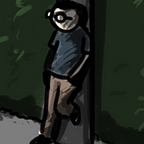Modders aren’t supposed to fix bugs
Fallout 76 exposed Bethesda’s biggest development flaws: the lack of polish and the necessity of mods
Every Elder Scrolls game the company launched was riddled with bugs, so it was always necessary to patch things up soon after release. In the days before Steam, this meant going to the website and downloading huge patches over dial-up so the game could be playable, or at least wouldn’t crash on important parts before you could save.
But there was also a “magical solution” they used: give fans the ability to fix the company’s mess until a patch was available.
Morrowind was the first game I can remember where Bethesda gave players the option to add content at their will, even officially releasing a few mods of their own as a bonus. The mod editor was also used to make the game itself, so one could see all the trouble the developers had to go through. At the time, people didn’t really mind to play something a little rough around the edges, and Morrowind was stunning on its own (it basically saved Bethesda from bankruptcy), but people soon after made entire mods to overhaul the game’s textures, the two most famous (at least for the community I knew) being “Better Heads” and “Better Bodies”.
There were also mods that made stores close at night, traveling merchants to show up on the roads, better textures for plants and houses, and even balancing mods for the world level progression. My point here is: the game wasn’t unplayable by any means, but some mods did smooth the experience a little bit for those expecting a more polished product. I don’t think Bethesda’s games could be called AAA back then.
Then came Oblivion, which was a big hit, although not as big as Skyrim would be. The game was, again, released with a mod editor, but it was definitely a more polished product. However, mods now started to give a little bit of “quality of life” improvements over the vanilla content. If the player didn’t want to spend time fiddling with a horrible menu, they needed to download a mod. If they wanted a better world level balance instead of everything leveling up together, they needed a mod. If the player found a bug after Bethesda finished patching up the game and moved on, they needed a mod.
It was here that Todd Howard started to show some disconnect from the fanbase. Oblivion did well, but the critique always said it lacked something. Much of the fanbase at the time went wild with the game, but said it didn’t feel very much alive (even though most NPCs had a daily routine). The uniqueness and care for detail were gone, but Todd Howard thought people missed the strangeness of Morrowind.
From this point forward, mods were a requirement to play. Every game was a success, from Fallout 3 to Fallout 4, even considering the many, many, MANY re-releases of Skyrim between them. Bethesda had so much cash that its parent company, ZeniMax Media, opened another studio (ZeniMax Online) to develop an MMO — which, funny enough, released a much more polished product than Bethesda ever did.
To play Skyrim, for example, it would be necessary a world map mod (since the original didn’t show roads and had very poor texture quality). To play on PC, you would need a UI mod (since the game uses the console interface, which is horrible to play with mouse and keyboard). Wanted to play Skyrim in borderless window mode? You guessed it: needed a mod. This became so ingrained within Bethesda’s games that the company launched its own mod store.
Now they even have the “Creation Club”, where players can buy “official mods” (made by Bethesda and other people) within in Skyrim Special Edition and Fallout 4. This basically means that Bethesda uses mods to cover the lack of polish when releasing their games.
I don’t know what’s the reason for this. They must have some sort of quality control, like a QA (Quality Assurance) department that checks the game for bugs and things like that before release, but it doesn’t seem enough. Or maybe they suffer from bad time management, wanting to create something grandiose, losing themselves over little details, and running to finish and release the product on time.
Maybe we’ll never know why this keeps happening, but the release of Fallout 76 showed that even when reusing assets (from Fallout 4) to speed up production, the technical quality leaves a lot to be desired. And now, without the ability to use mods made by the people who bought their games, it became clear how this bad practice can affect what should’ve been another hit. And don’t even get me started with the Canvas Bag Problem, which showed a big lack of respect for their customer base.
Even though I criticize their games a lot when talking about RPGs with friends, I believe that, as someone once said, “nobody wants to make a bad game”, so I really hope the company let the Fallout 76 problems sink in, analyze them, and realize what they can do to make their next game better. Bethesda can do great things, but it must distance itself from the love for their own games, see them through the players’ eyes, to find out what’s been causing trouble. I mean, some people even found the secret developer room full of unreleased items, so obviously, something is wrong in their production pipeline. Let’s hope they can figure out what it is before the next release.
Because, you know, players shouldn’t be fixing bugs.
